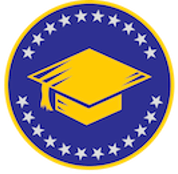
There is support in academic circles for adding an “A” to STEM, making it STEAM for Science, Technology, Engineering, Arts, and Mathematics. There’s no need to add an “A” if the purpose is to train students in the other four disciplines to be creative. They’ve always been creative.
The Humanities Don’t Have a Lock on Creativity
In the humanities, students rightfully see themselves as being in creative fields, but their peers in STEM discount the creative component in the STEM fields. They tend to see themselves as being engaged solely with facts, data, rules, computations, and natural laws.
Science, technology, engineering, and mathematics are fields in which imagination and creativity flourish just as they do in the performing and visual arts, poetry, philosophy, languages, and literature. The integration of STEM subject matter expertise and imagination is the measure of success in all of them. There’s a difference though. Art may be its own reward, but the STEM fields are oriented toward practical outcomes.
Problem + Imagination = Solution
Let’s look at an example of practical outcomes that demonstrate the role of imagination and creativity in STEM. In 1812, Charles Babbage, a mechanical engineer, observed the deficiencies of “human computers” and imagined a way to mechanize their tasks. He built an “Analytical Engine” capable of rapidly executing arithmetic calculations by machine. Over 100 years later, Alan Turing theorized that an electronic analytical engine could rapidly perform several of the tasks of a mechanical device simultaneously and much faster. He helped build and then used the first such device (now known as a computer) to solve extremely complex cryptanalysis problems in wartime. Fifteen years later, Grace Hopper imagined that a machine-independent programming language could be developed that would enable the same program to be used on any computer to perform the same task. She led the development of CoBOL, the first of these languages.
Can Creativity Be Taught?
Answers to this question differ, but a strong case can be made that creativity itself cannot be taught, although it can be encouraged and developed. In college core courses in the STEM fields, there are now assignments designed to develop creativity and emphasize its importance. There are also entire courses that cultivate creative potential. Examples are noted below using excerpts from the syllabi of three colleges.
- Harvard University: Course Title “Creativity and Innovation”
“This course focuses on creativity and innovation, examining the interplay between creativity, processes, systems, and successful innovation. Throughout the course we explore tools and techniques for fostering individual and group creativity, organizational practices that encourage innovation, methods for developing and evaluating ideas and models through which to execute these ideas, and practices for leading innovation. Using a variety of readings, case examples, discussions, experiential exercises, and a team project, students explore and apply their creativity.”
- University of Kentucky: Course Title — “Innovation and Creativity”
“Through a case study approach, this course cultivates creative capabilities in students in order to develop imaginative approaches to solving problems. Students will draw insights from successful innovative organizations such as the National Centers for Disease Control, Bell Laboratories, Apple Computers, Xerox SPARC, Lockheed Skunkworks, Advanced Research Projects Agency, and the National Science Foundation.”
- University of Maine: Course Title — “Infusing Creative Thinking Into STEM Education”
“Innovation, discovery, and invention are the direct result of the creative act. A mandate of educational institutions is to develop the creative potential of students to its fullest. The problem with achieving this aspiration is that the creative process itself is not taught across the wide spectrum of an institution’s curriculum as an independent discipline. The premise of this course is to expand knowledge of the creative thinking process so that it reinforces creative thinking as an integral part of STEM education.”
In his paper, “Promoting Creativity and Innovation in STEM Education”, David Cropley of the University of Southern California recommends that courses in STEM creativity answer the following questions:
- What is creativity?
- What contribution does STEM creativity make to society?
- What are the stages in the development of a creative solution?
- What role does creativity play in innovation?
- How do STEM professionals use creativity to solve problems?
- Can creativity be measured or assessed?
- How are creative ideas generated?
- How is creativity fostered in people?
- Can creativity be managed?
Here’s what’s not needed to inspire greater creativity in STEM students: Requiring them to take courses such as “The Arts for STEM Students” or “An Overview of the Humanities for STEM Students”. These are unnecessary and irrelevant to their educational goals. They disparage STEM students and professionals because they imply that one can only learn about and develop creativity in the context of the humanities.
STEM students should be keenly aware of the role that creativity plays in the practice of their own professions. STEM educators need to be conscious of the need to nurture and encourage creativity in STEM students.
